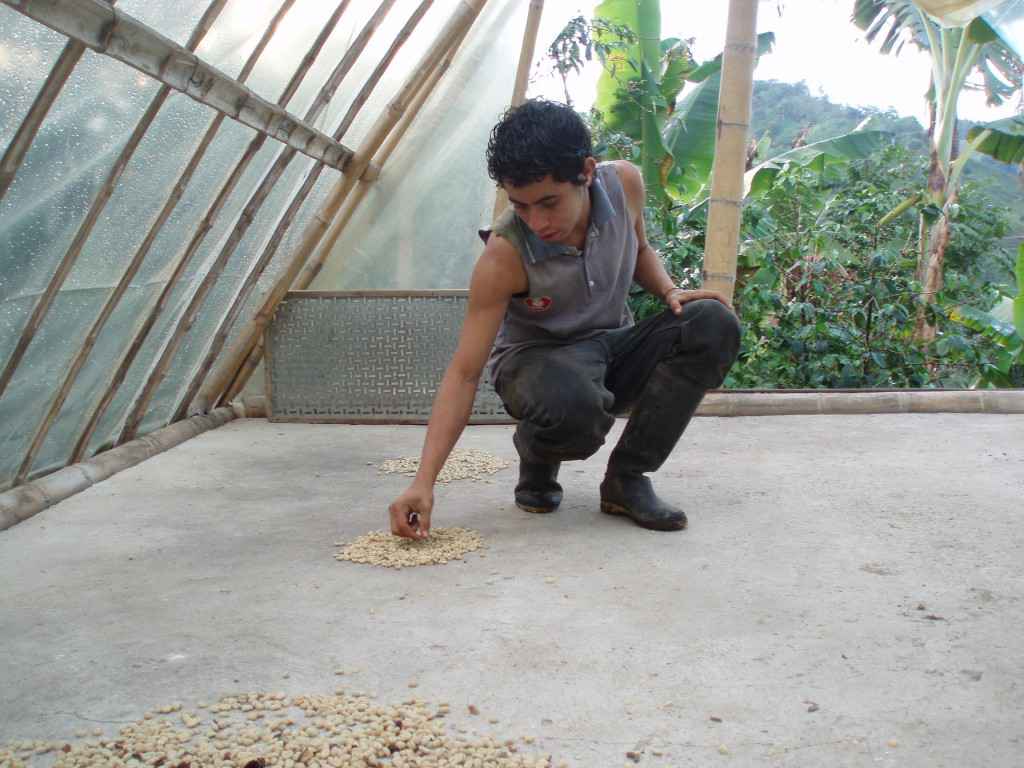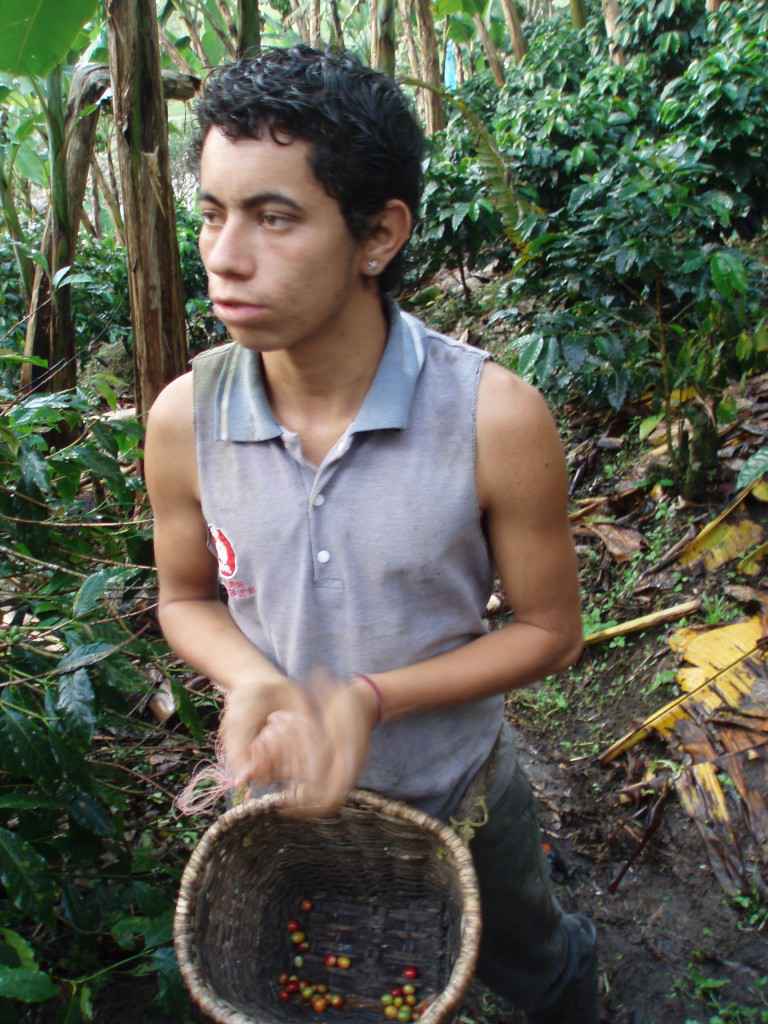Don Elias’ nephew, Jose, looks to be about twenty. He’s short. He has curly black hair and wears a cutoff tee-shirt, worn jeans, and black rubber boots. A woven basket is strapped around his waist—a place to collect picked coffee beans.
Don Elias is in his sixties. He smiles when he meets the three of us: Florian from Switzerland, Noel from Malaysia, and myself. We have walked down the road five kilometers from Salento to take a tour of his farm.

After exchanging pleasantries, Jose leads us away from the house, down a trail, and pauses for his first explanation. He speaks in Spanish and Noel helps to translate what I don’t understand.
Arabica vs Colombian coffee
The first thing he tells us is the difference between Arabica and Colombian coffee beans. They come from two different coffee trees, both of which are growing here in front of us.
The Colombian variety appears to grow taller and skinnier, producing yellow beans when ripe, compared to that of its shorter, stouter counterpart which produces red beans.
“There is no difference in taste or aroma between the beans of each tree, but those of the Arabica, which originate from Ethiopia, fetch a higher price on the international market.” He explains.
Their farm is small—approximately 2000 trees including a mix of both types. “We’re small enough that we only need help from our extended family for the harvest. We don’t have to hire anybody from outside the family.
Shade-grown coffee
“Different climates require different amounts of shade for growing coffee.” Jose explains, a little further down the trail. “This is why you will see banana plants, avocado trees, and pineapples growing among the coffee.”
The climate around Solento doesn’t require so much shade, but it seems like there were quite a few banana plants scattered around. They also sell the bananas for extra income.
Most grow on a slope, so the trees don’t get too much water. “Remember?”, he says “Coffee trees are sensitive. They need just enough of everything, not too much, and not too little.”
Jose leads us down the hill towards the river. He talks about the harvest.
“The May harvest is bigger. We sell 50% to the cooperative in Armenia and the other part we keep for ourselves to sell, mostly to the visitors that come here to the farm.” And at the end of the tour I will buy my brother a bag of roasted whole beans.
Processing the beans

We circle around and make our way back behind the house. This is where the processing begins.
The harvested beans are de-husked, then left overnight, washed, then dried under the sun and out of the rain for eight days. Jose shows us the beans lying on cement under an open-air greenhouse.
“After the beans are dried, they are ready to be sold to the cooperative. Or, for the beans we’re keeping, we now take off the second skin.” Jose explains. Then these greenish-gray beans are roasted until they become the brown beans we are used to buying. “This is the first time you can smell the aroma.” He says smiling, holding a bowl of roasted beans up to our noses.
The final stage
Jose dumps the roasted beans into a metal hand grinder and grinds them into a fine powder. Then in the kitchen he puts the ground coffee into a cloth filter. After running hot water through it we have coffee.
We all move out to the table on the porch and Don Elias joins us. We sip our coffee and enjoy the conversation. We ask him lots of questions about his land and how he got started in farming, all while the chickens walk around and peck the earth for insects, puppies chase after their mother for milk and the children in the family play board games.
About the tour
About five years ago, Don Elias started giving tours. The family charge 5,000 pesos, about $3 USD, for a tour lasting about 45 minutes to an hour.
To find Don Elias, leave Salento across the bridge, toward La Serrana hostel/eco farm. It’s about a 5 km walk along a dirt road past country houses and farms.
Check out more photos from our coffee farm tour at Don Elias.
Want to visit a real Colombian coffee farm? Join us on our Experience Colombia Tour!


